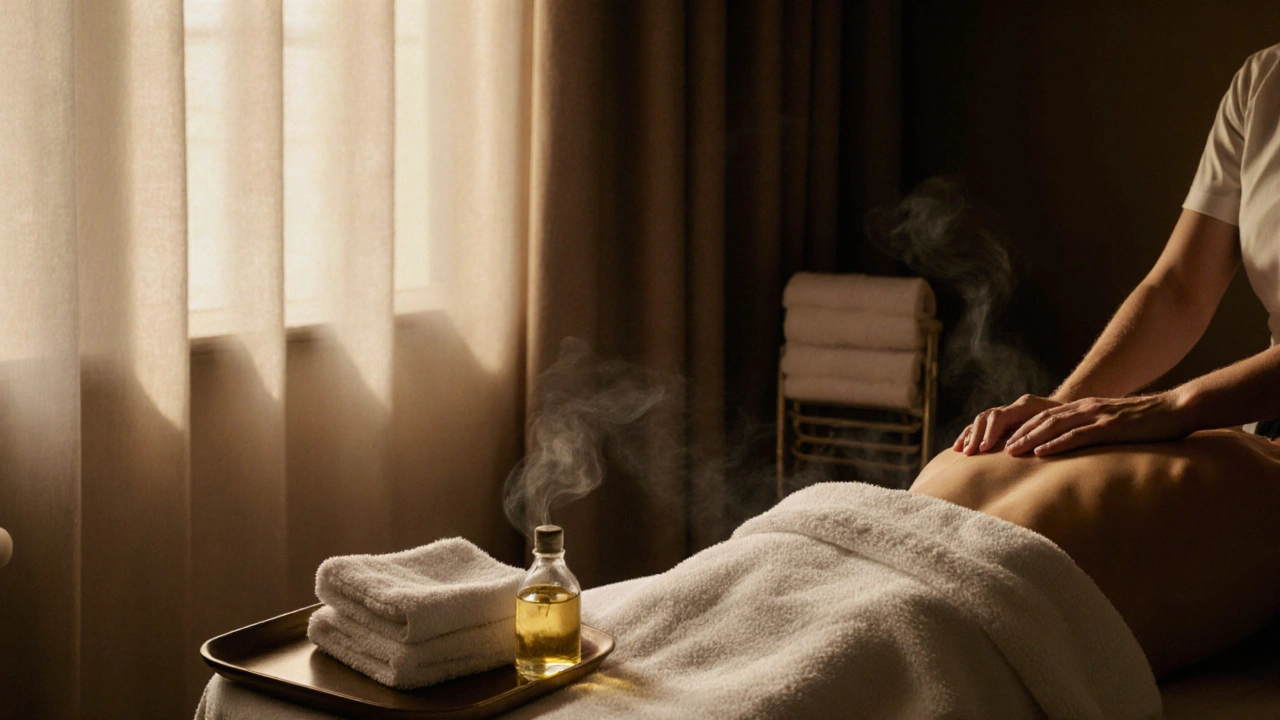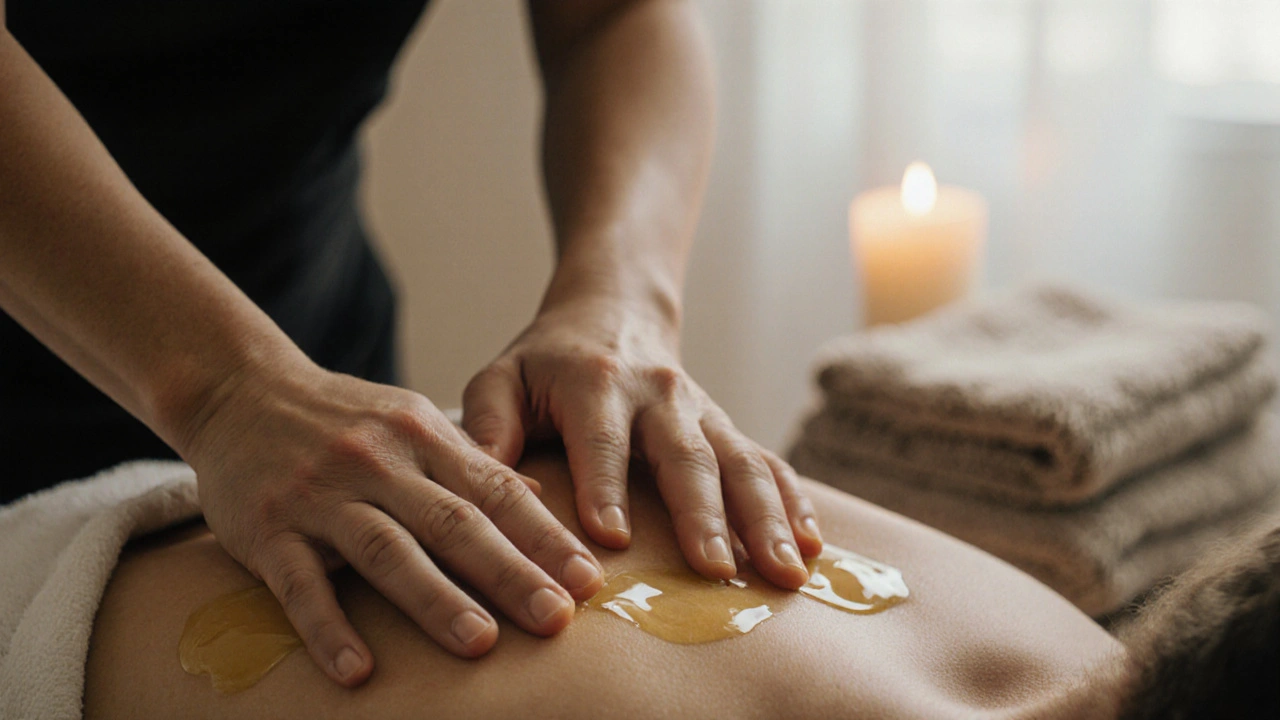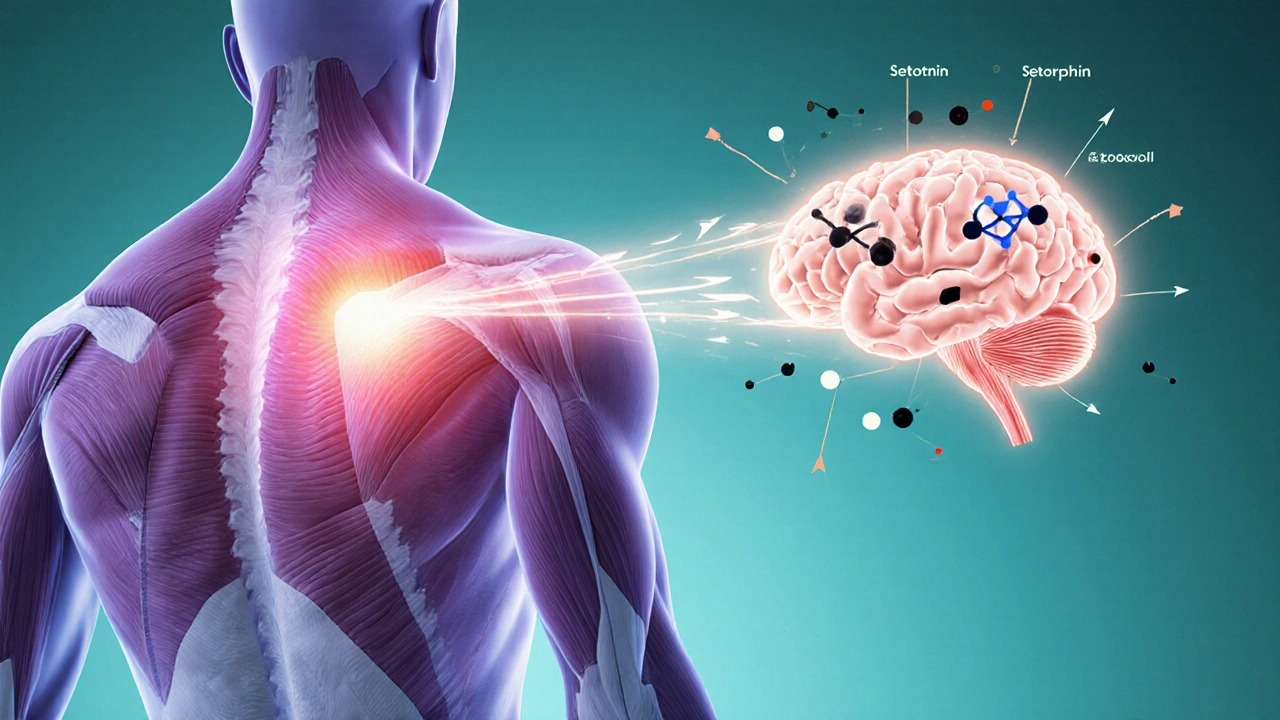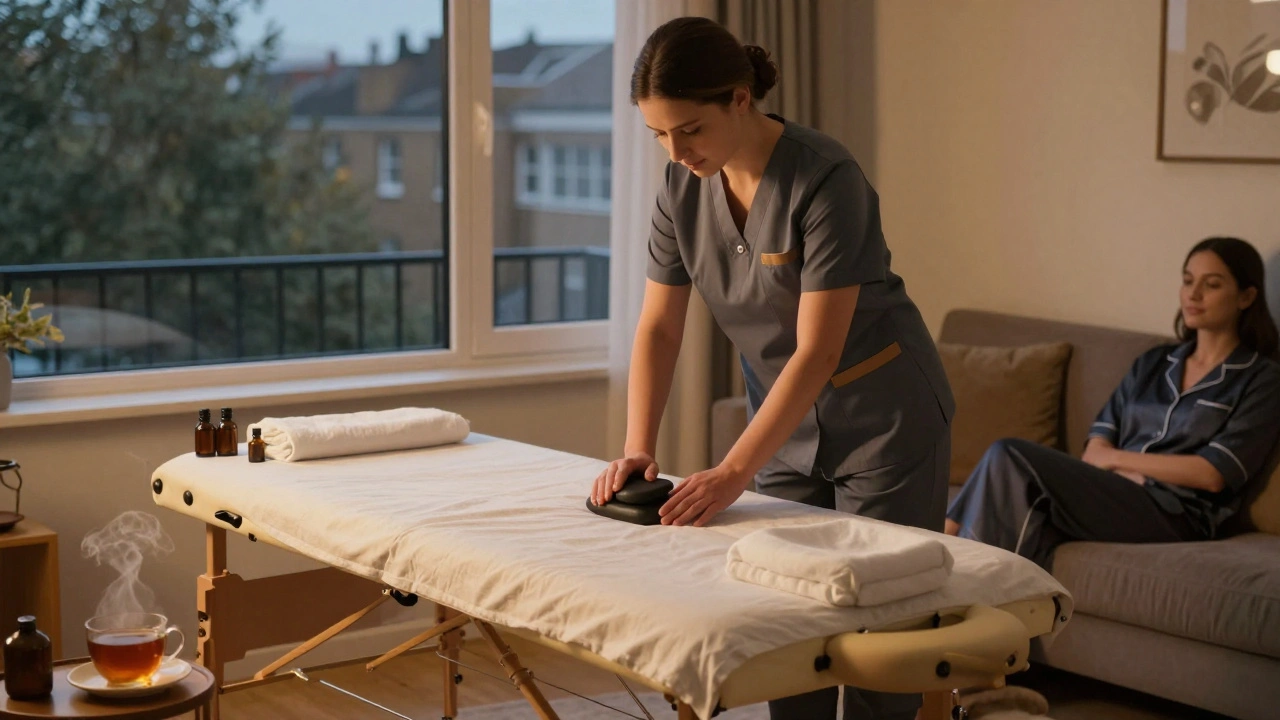The Art of Swedish Massage: Techniques for Total Relaxation

Swedish massage isn’t just another spa treatment-it’s the foundation of modern massage therapy. If you’ve ever felt your muscles melt under steady, flowing hands, you’ve experienced Swedish massage at its best. Unlike deep tissue or sports massage, which target knots and injuries, Swedish massage is designed for one thing: total relaxation. It’s the go-to for people who need to unwind, not fix something broken. And in a world where stress is constant, that’s not a luxury-it’s a necessity.
What Makes Swedish Massage Different?
Swedish massage uses five core techniques, each with a specific purpose. These aren’t random strokes-they’re a carefully ordered sequence that tells your nervous system it’s safe to let go. The five techniques are effleurage, petrissage, friction, tapotement, and vibration. Together, they create a rhythm that slows your heart rate, lowers cortisol, and signals your body to shift from fight-or-flight to rest-and-digest mode.
Effleurage is the gentle, gliding stroke that starts and ends every session. It warms up the muscles, spreads oil evenly, and helps the therapist feel for tension. Petrissage comes next-kneading motions that lift and squeeze muscle tissue. This isn’t deep pressure; it’s rhythmic compression that increases circulation without bruising. Friction is more focused, using circular or cross-fiber movements to release adhesions in the fascia. Tapotement, the rhythmic tapping or cupping, wakes up sleepy nerves. And vibration? That’s the trembling hand movement that shakes out lingering tightness.
Unlike deep tissue massage, which digs into layers with slow, intense pressure, Swedish massage flows. It’s like waves rolling onto a beach-not forceful, but persistent. A 60-minute session typically covers your back, legs, arms, neck, and feet. The therapist rarely skips the scalp or hands, even if you didn’t ask. That’s because relaxation isn’t just about muscles-it’s about the whole nervous system.
Why It Works: Science Behind the Relaxation
There’s real biology behind why Swedish massage makes you feel lighter. A 2023 study from the University of Oxford tracked participants after a single 50-minute session. Blood pressure dropped an average of 8 points systolic. Cortisol levels fell by 31%. Oxytocin, the bonding hormone, spiked. These aren’t minor changes-they’re measurable shifts toward calm.
Massage doesn’t just relax muscles. It quiets the sympathetic nervous system-the part that keeps you alert, anxious, or on edge. At the same time, it activates the parasympathetic system, which handles digestion, sleep, and recovery. That’s why people often feel sleepy after a session, even if they came in wide awake. It’s not laziness-it’s your body finally getting permission to rest.
And the effects last. People who get regular Swedish massages report better sleep for up to 72 hours afterward. They feel less reactive to stress. Their headaches decrease. One London-based office worker I spoke with said she stopped taking afternoon caffeine after starting monthly sessions. "My brain stopped buzzing," she told me. "I just… stopped needing to fix everything right away."
How a Typical Session Unfolds
Most sessions start with a quick chat. Not a full consultation-just enough to know if you’ve had recent injuries, are pregnant, or have areas you’d prefer not touched. Then you’re asked to undress to your comfort level. You’ll be covered with a towel the whole time. Only the part being worked on is exposed.
The room is warm, dim, and quiet. Soft music plays, if at all. The therapist uses a light, unscented oil-often almond or grapeseed-because strong scents can trigger stress in sensitive people. The first few minutes are all effleurage: long strokes down your back, across your shoulders, along your legs. It’s slow. Purposeful. You’re not supposed to feel anything intense. Just warmth spreading.
As the session continues, pressure increases slightly. Petrissage moves into the glutes and hamstrings. Friction works along the spine, not on it-always between the muscles, never on the bones. Tapotement might come on the calves or upper back, a gentle rhythm like rain on a roof. The therapist never rushes. If you’re breathing shallowly, they’ll pause and wait. If you sigh, they’ll smile. This isn’t a checklist. It’s a conversation.
The last five minutes return to effleurage. Slow, wide strokes. The lights stay low. No sudden movements. You’re meant to drift. Many people fall asleep. That’s not a failure-it’s the goal.

Who Benefits Most?
Swedish massage isn’t for everyone-but it’s perfect for a lot of people. If you:
- Feel constantly tense, even when you’re not working
- Have trouble switching off at night
- Get frequent headaches from stress
- Feel emotionally drained but physically okay
- Have a desk job with stiff shoulders and neck
…then this is your therapy. It’s especially helpful for people with anxiety, mild depression, or burnout. It doesn’t replace therapy or medication-but it creates space for healing.
It’s also ideal for beginners. If you’ve never had a massage before, Swedish is the safest starting point. No deep pressure. No cracking. No discomfort. Just gentle, consistent care.
It’s not for people with acute injuries, open wounds, or recent surgeries. If you’re pregnant, make sure your therapist is trained in prenatal massage. And if you’re looking to fix a chronic back issue, you’ll need something more targeted-like deep tissue or myofascial release.
What to Expect After Your First Session
Right after, you’ll feel calm. Maybe a little floaty. Some people feel lightheaded. That’s normal. Drink water. Don’t jump into a meeting or drive aggressively. Give yourself 20 minutes to reorient.
The next day, you might feel sore-but not in the way you do after a workout. It’s more like a deep, pleasant tiredness. Your muscles feel loose. Your mind feels quiet. You might sleep better that night. Some people notice their posture improves without trying. Shoulders drop. Jaw unclenches.
Don’t expect miracles after one session. But after three, spaced a week apart, most people report a noticeable shift. Stress feels lighter. Reactions slow down. You notice the difference in how you respond to traffic, emails, or arguments.
How Often Should You Get It?
There’s no one-size-fits-all answer. But here’s what works for most people:
- Once a month: For maintenance. Keeps stress from building up.
- Every 2-3 weeks: If you’re in a high-pressure job or going through a tough time.
- Weekly for 4-6 weeks: If you’re recovering from burnout, grief, or chronic stress.
After that, most people settle into a monthly rhythm. It’s not expensive-£50 to £75 for an hour in London-and it’s one of the few self-care habits that pays off immediately. You don’t need to buy equipment. You don’t need to change your diet. You just lie down, and someone else takes care of your body.

DIY Swedish Massage: Simple Moves for Home
You don’t always need a therapist. You can bring some of the principles home. Try this 10-minute routine before bed:
- Apply a small amount of oil to your hands and warm them up.
- Use long, slow strokes from your shoulders down your arms-effleurage.
- Knead your upper back with your fists, rolling gently side to side-petrissage.
- Use your knuckles to make small circles along your spine, avoiding bones-friction.
- Tap lightly on your thighs with cupped hands-tapotement.
- Finish with slow, wide strokes from your neck to your hips.
Do this while watching TV or listening to calm music. It won’t replace a professional session-but it keeps the relaxation habit alive.
Choosing the Right Therapist
Not all massage therapists are the same. Look for someone who:
- Has a certificate in Swedish massage (not just "massage therapy").
- Asks about your goals before starting.
- Uses clean, warm towels and a quiet room.
- Doesn’t push you to buy packages or upsell products.
- Respects your boundaries without making you feel awkward.
Ask if they’ve trained in the classic Swedish method, not just a mix of styles. Some places call anything gentle "Swedish"-but real Swedish massage follows a specific sequence. A good therapist will know the five techniques by name and explain them.
Check reviews for words like "calm," "gentle," and "didn’t rush." Avoid places that advertise "deep pressure" or "pain relief"-those are signs they’re mixing in other modalities.
Final Thought: It’s Not a Treat. It’s a Tool.
Swedish massage isn’t about luxury. It’s about reclaiming your nervous system. In a culture that glorifies hustle, choosing to lie still and be cared for is radical. You don’t need to earn relaxation. You don’t need to be "deserving." You just need to show up.
One client told me, "I used to think massage was for people who could afford it. Then I realized it’s for people who need it. And I needed it more than I knew."
That’s the truth. You don’t have to be broken to benefit. You just have to be human.
Is Swedish massage painful?
No, Swedish massage is not meant to be painful. It uses gentle to moderate pressure, designed to relax rather than deepen. If you feel pain, tell your therapist immediately. Real Swedish massage should feel soothing, not intense.
How long does a Swedish massage session last?
Most sessions last 60 or 90 minutes. A 60-minute session covers the full body with balanced attention. A 90-minute allows for more focus on problem areas like shoulders or feet. Shorter 30-minute sessions focus on specific areas like neck and back.
Can I get a Swedish massage if I’m pregnant?
Yes, but only with a therapist trained in prenatal massage. They’ll use special positioning, avoid certain pressure points, and adjust pressure levels. Swedish massage is actually one of the safest options during pregnancy because it’s gentle and promotes circulation without deep pressure.
What’s the difference between Swedish and deep tissue massage?
Swedish massage focuses on relaxation using long, flowing strokes and light-to-medium pressure. Deep tissue massage targets chronic muscle tension with slower, deeper pressure and focused techniques. Swedish is for calming the nervous system; deep tissue is for breaking down scar tissue and adhesions.
Do I need to be naked during a Swedish massage?
No. You’re covered with a towel at all times, and only the area being worked on is exposed. Most people keep their underwear on. The therapist respects your comfort level. If you’re unsure, ask ahead of time-there’s no judgment.
How soon will I feel the benefits?
You’ll feel calmer right after the session. Better sleep and reduced stress often show up within 24 hours. For lasting changes-like less chronic tension or improved mood-most people need 3-4 sessions spaced over a few weeks.
Can Swedish massage help with anxiety?
Yes. Studies show Swedish massage lowers cortisol and raises oxytocin, which helps reduce anxiety symptoms. It doesn’t replace therapy, but it’s a powerful tool to help calm the nervous system and create space for emotional recovery.
Is Swedish massage safe for older adults?
Yes, and it’s often recommended for seniors. It improves circulation, reduces joint stiffness, and promotes better sleep. Therapists adjust pressure and pace for older clients. Always mention any medical conditions like osteoporosis or blood pressure issues before the session.
Next time you feel overwhelmed, don’t reach for another cup of coffee. Lie down. Let someone else hold your weight for an hour. Your body will thank you.




sam ly
November 9, 2025 AT 03:05Jeanine Lee
November 9, 2025 AT 07:12Hayley Wallington
November 10, 2025 AT 20:30Stephen Taliercio
November 12, 2025 AT 07:11SHAHUL NAZEEM
November 12, 2025 AT 10:19Katelyn Stephens
November 14, 2025 AT 06:35Mona Nona
November 15, 2025 AT 23:07